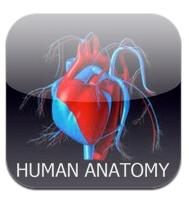[DAY 2] Cool M-Learning Devices
Choose two apps from the sample list below (or find your own award-winning apps) and evaluate them with these questions:
- what problem does the app solve?
- what affordances of mobile does the app rely on?
- what are the non-mlearning (competing) methods of teaching the subject?
- how is the app’s mlearning approach more or less compelling than the competing methods? (consider cost, accessibility, learning outcomes)
- what changes are needed to make the mlearning app more widely adopted?
As a math teacher, Math apps area always within my radar of interest. Hesabi is a great math tool for young children because it’s specifically designed to attract their attention. With full of colours and many games available in this app, children can maintain their attention span and acquire math skills at the same time.
It relies on mobility, individuality, and creativity. However, it doesn’t offer accessibility or connectivity as the app is in Arab. Children in other parts of the world might not have easy access to it if they can’t read Arab. Also, people in remote areas won’t be able to be well-connected to the app.
Whenever I see math-related apps like this one, I’m a little sad that there are no apps available for high school students. As a secondary school teacher, I’d like to see more m-learning devices for high school students.
Another app that really interests me is an app called Human Anatomy.
http://imuelearning.blogspot.com/2011/07/useful-free-human-anatomy-app-for-your.html
It’s an ideal app for students of all ages who want to learn the names of various body parts, organs, and terms related to the human body. Some of the features of this app are the illustration of each biological system, a description of each element represented in each biological system, and reference links to Wiki for more detailed descriptions.
Although the app offers limited information and not-so-great-looking illustrations, it’s still a great m-learning tool for educational references. There needs to be some changes to illustrations made. Also, information should keep updated in order to be utilized as an educational app.
Deb
Posted in: Week 11: Mobiles


David William Price 8:20 pm on November 18, 2011 Permalink | Log in to Reply
Thanks for your reviews!
What do you think the possibilities are for apps that scaffold authentic learning vs. trying to do the learning in the mobile itself? An app might help you do a dissection, or might guide you through learning math in realistic contexts, with collaborative activities and sharing of the mobile…
Deb Kim 11:15 pm on November 21, 2011 Permalink | Log in to Reply
Hi David,
Whether an app “scaffolds authentic learning” or “[tries] to do the learning in the mobile itself”, it should suit children at the right age/grade and at the right knowledge level.
Why not have an app that does both? I’ve seen many websites and games that focus on secondary Math and collaborative activities, but haven’t seen apps for m-learning that focus on them.
Deb